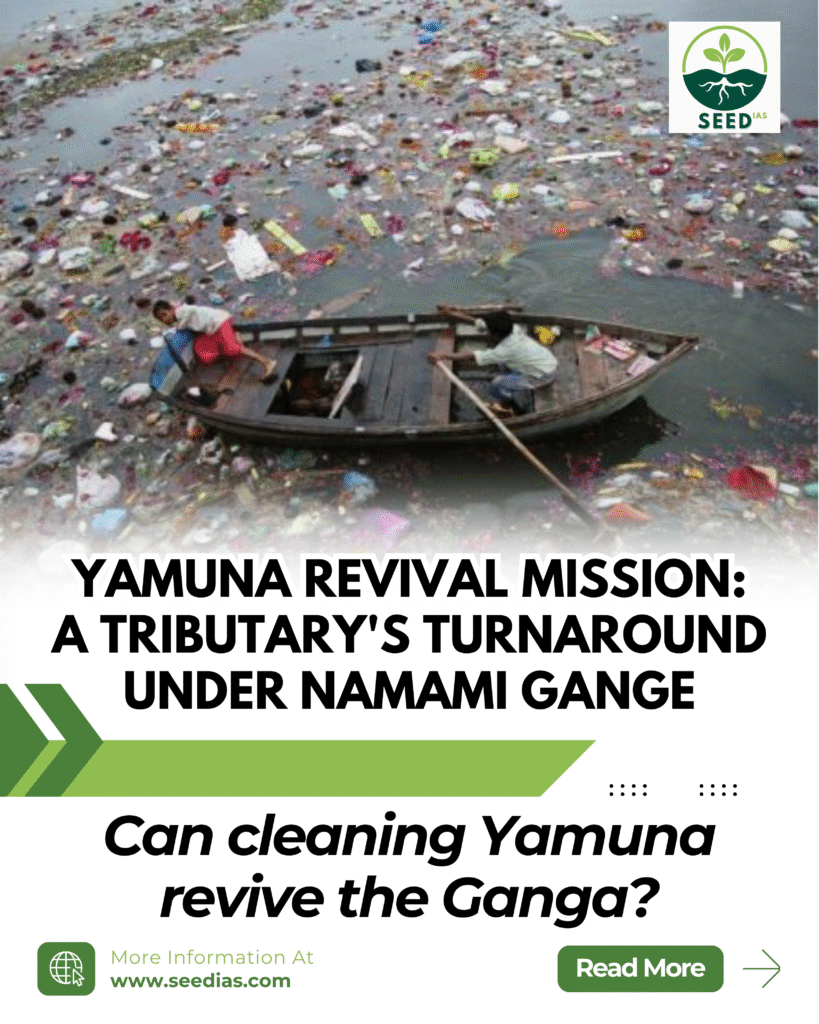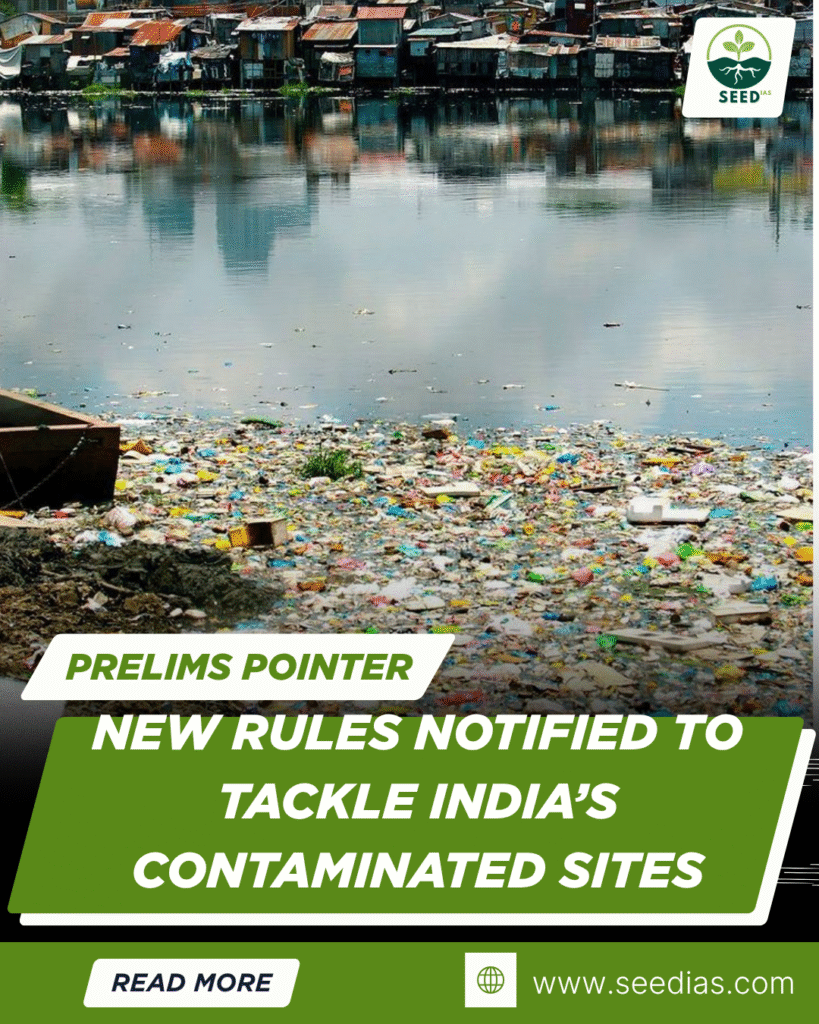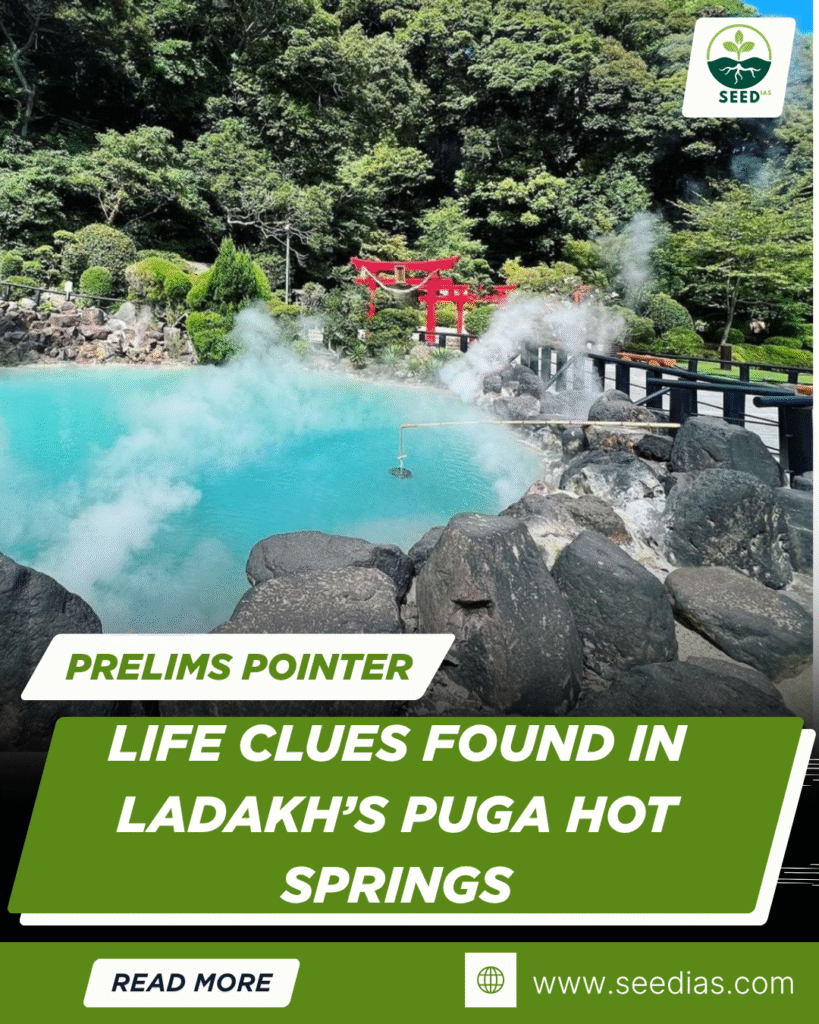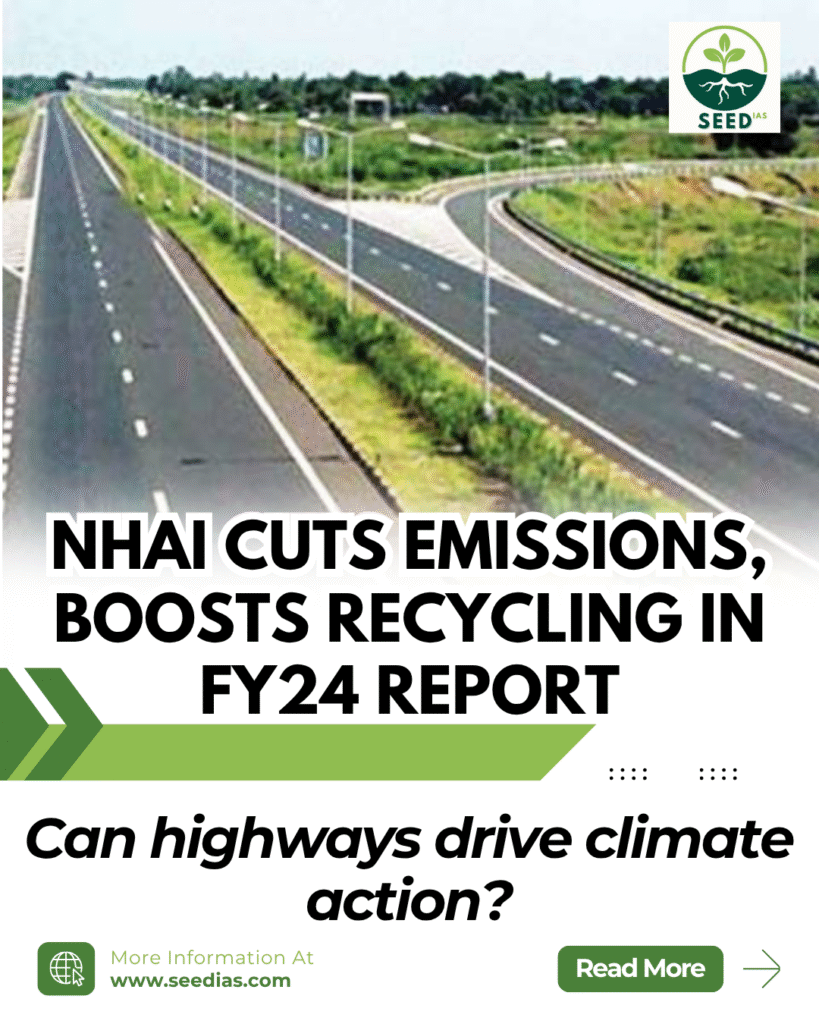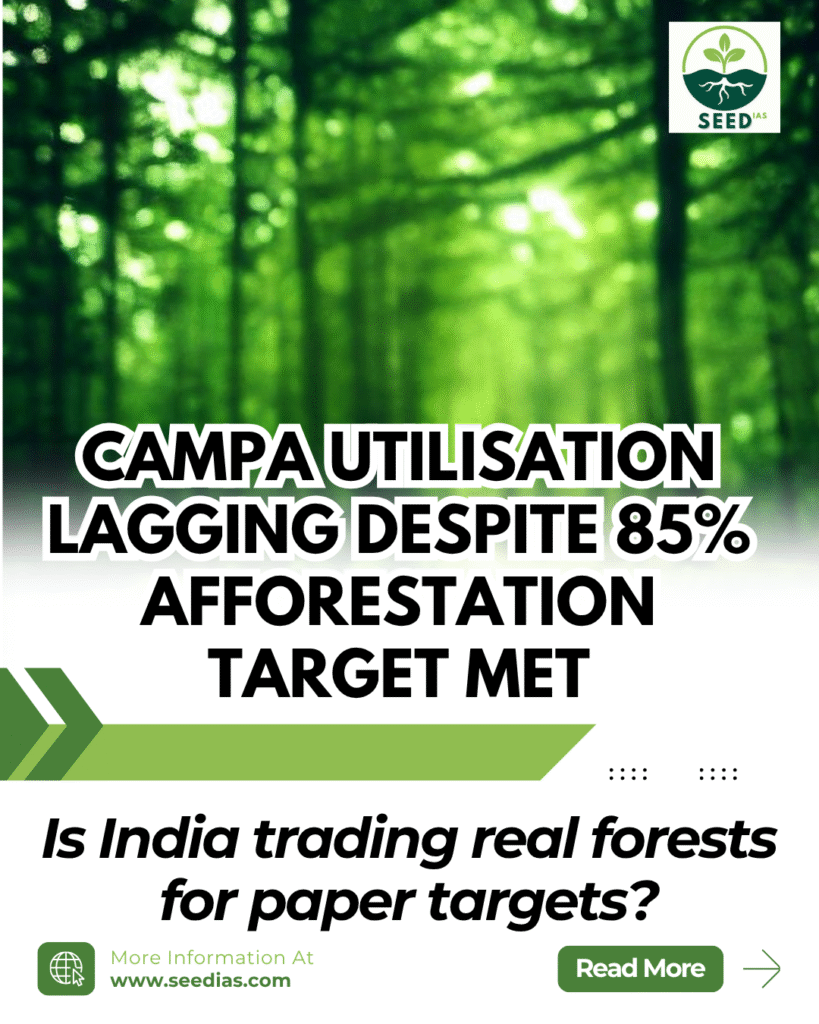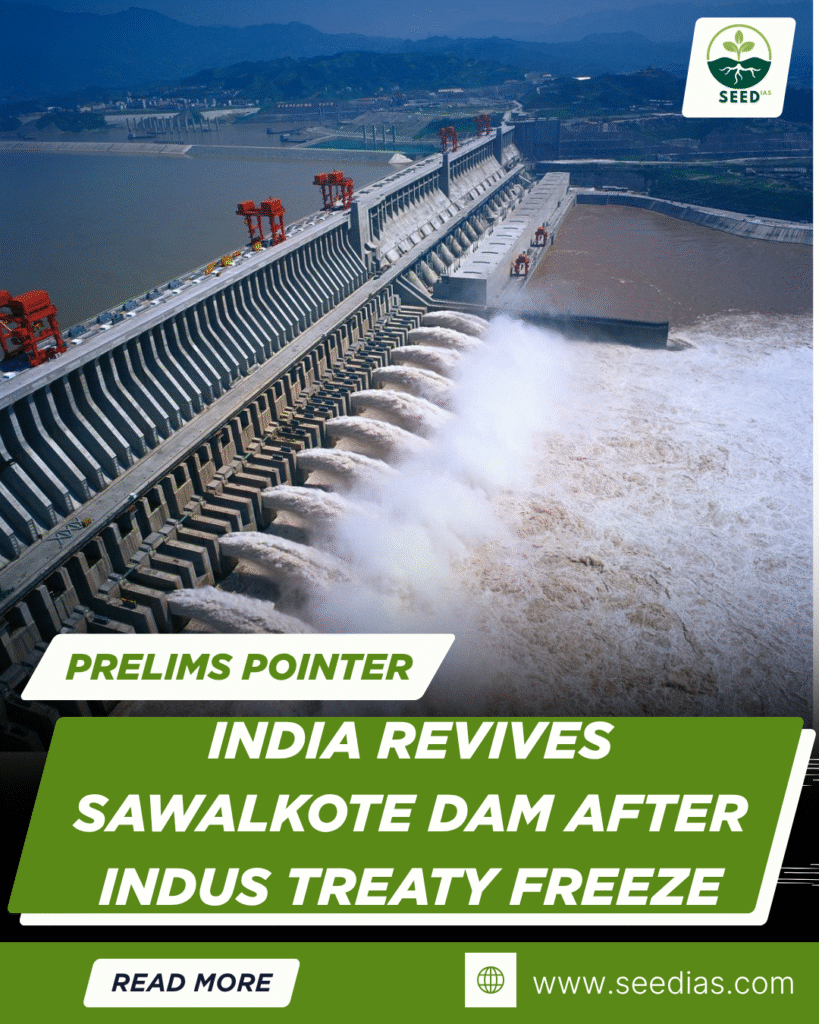Why in News?
The Delhi government has prioritized the Yamuna river clean-up, aligning its efforts with the Namami Gange Programme (NGP). As Yamuna is a major tributary of the Ganga, this integration supports both regional and national goals for rejuvenating polluted rivers in India.
Key Terms/Concepts
| Term | Explanation |
|---|---|
| Namami Gange Programme (NGP) | A flagship initiative by the Ministry of Jal Shakti to clean and rejuvenate the Ganga River and its tributaries. |
| Biochemical Oxygen Demand (BOD) | A measure of the oxygen required by microorganisms to break down organic matter in water. Higher BOD means more pollution. |
| Zero Liquid Discharge (ZLD) | An industrial wastewater management system that ensures no liquid waste is discharged into the environment. |
| Effluent Treatment Plant (ETP) | A facility that treats industrial wastewater to remove harmful pollutants before discharge. |
| Interception and Diversion (I&D) | A method to intercept sewage and divert it to treatment plants before it enters rivers. |
News Details
Causes of River Pollution in India: Industrial Pollution – Textile, tannery, and chemical industries discharge toxic effluents (lead, mercury, arsenic) into rivers like Ganga (Kanpur), Yamuna (Delhi), and Damodar. Many industries bypass ETPs or dilute waste to manipulate regulatory checks. Agricultural Runoff – Excess fertilizers and pesticides lead to nitrate/phosphate contamination, causing algal blooms. Stubble burning in Punjab-Haryana adds ash and pollutants to rivers through rainwater runoff. Religious & Cultural Practices – Immersion of idols (made of Plaster-of-Paris), flowers, and cremation materials introduces harmful substances like paints, plastics, and ash into rivers. Plastic & Solid Waste – India is among the top plastic polluters. Rivers like Mumbai’s Mithi and Delhi’s Yamuna are clogged with plastic and unsegregated solid waste. Thermal & Radioactive Pollution – Discharges from power plants and uranium mining increase water temperature and introduce radioactive elements, affecting aquatic ecosystems. Climate-Related Stress – Irregular rainfall and extended dry periods reduce river flow, concentrating pollutants. Extreme weather events also flush large contaminant loads into rivers.
About the Namami Gange Programme
Structure and Implementation: The National Ganga Council is chaired by the Prime Minister and is the apex policy-making body. The Empowered Task Force, headed by the Jal Shakti Minister, ensures inter-ministerial coordination. The National Mission for Clean Ganga (NMCG) is the implementing agency. State and District Ganga Committees are responsible for local implementation and monitoring.
Main Pillars of Namami Gange: Sewerage Treatment Infrastructure – Build and upgrade STPs to manage wastewater. River Surface Cleaning – Remove solid waste and floating debris from rivers. Afforestation – Increase green cover and stabilize riverbanks. Industrial Effluent Monitoring – Track and regulate pollution from industries. Riverfront Development – Promote eco-tourism and public access to clean rivers. Biodiversity Conservation – Protect aquatic species such as the Gangetic dolphin. Public Awareness – Educate people on river conservation through campaigns. Ganga Gram – Develop sustainable model villages along the Ganga’s banks.
Key Interventions
Nirmal Ganga – Pollution abatement through improved sewage and waste management. Aviral Ganga – Restoring natural river flow and ecological health. Jan Ganga – Community participation and stakeholder engagement. Gyan Ganga – Research and evidence-based policy development.
Key Achievements
Sewage Treatment Capacity – Increased more than 30 times compared to pre-2014 levels. Water Quality Improvements – In Uttar Pradesh, BOD reduced from 10–20 mg/l (2015) to 3–6 mg/l (2022). In Bihar, BOD reduced from 20–30 mg/l (2015) to 6–10 mg/l (2022). Biodiversity Gains – Notable rise in Gangetic dolphin population, with sightings in Prayagraj and in rivers like Bagmati and Babai. Global Recognition – Recognized in 2022 by the UN Decade on Ecosystem Restoration as a Top 10 World Restoration Flagship Initiative.
What Steps Can Be Taken to Mitigate River Pollution?
Stricter Industrial Regulations – Enforce ZLD, mandate real-time ETP monitoring, and penalize illegal discharges. Sustainable Agriculture – Encourage organic farming, buffer zones near rivers, and reduce agrochemical usage. Efficient Waste Management – Improve urban waste segregation, scientific landfill management, and restrict plastic use. Ecosystem Restoration – Rejuvenate wetlands, reforest riverbanks, and protect riparian zones. Technology Integration – Use IoT sensors, GIS mapping, and drones for monitoring and enforcement.
In a Nutshell (Memory Aid)
C-R-I-S-P Plan for River Pollution Control: C – Community participation (Jan Ganga), R – Restoration of ecosystems, I – Industrial regulation (ZLD, ETPs), S – Sewage treatment infrastructure, P – Plastic and solid waste control
Prelims Practice Questions
Q1. With reference to Namami Gange Programme, consider the following statements:
- It is implemented by the Ministry of Environment, Forest and Climate Change.
- The National Ganga Council is chaired by the Prime Minister.
- One of its objectives is to promote riverfront development and public participation.
Which of the above statements is/are correct?
A. 1 and 2 only
B. 2 and 3 only
C. 1 and 3 only
D. All of the above
Q2. Consider the following statements about causes of river pollution in India:
- Thermal pollution increases oxygen content in water, helping aquatic life.
- Agricultural runoff can lead to algal blooms that reduce water quality.
- Idol immersion contributes to toxic contamination in rivers.
Which of the above statements is/are correct?
A. 1 and 2 only
B. 2 and 3 only
C. 1 and 3 only
D. All of the above
Q3. What does a high Biochemical Oxygen Demand (BOD) value in a river indicate?
A. High dissolved oxygen
B. High pollution level
C. Low microbial activity
D. Cold and clean water
Mains Practice Questions
Q1. Discuss the key features and achievements of the Namami Gange Programme. How far has it succeeded in cleaning India’s rivers?
Q2. River pollution is a growing ecological and public health concern in India. Suggest a multi-pronged strategy to mitigate this issue.
Answers Table
| Question | Correct Answer | Explanation |
|---|---|---|
| Q1 | B | NGP is implemented by Ministry of Jal Shakti. PM chairs National Ganga Council. |
| Q2 | B | Thermal pollution harms aquatic life. Statement 2 and 3 are correct. |
| Q3 | B | High BOD indicates high pollution due to greater organic matter needing decomposition. |

